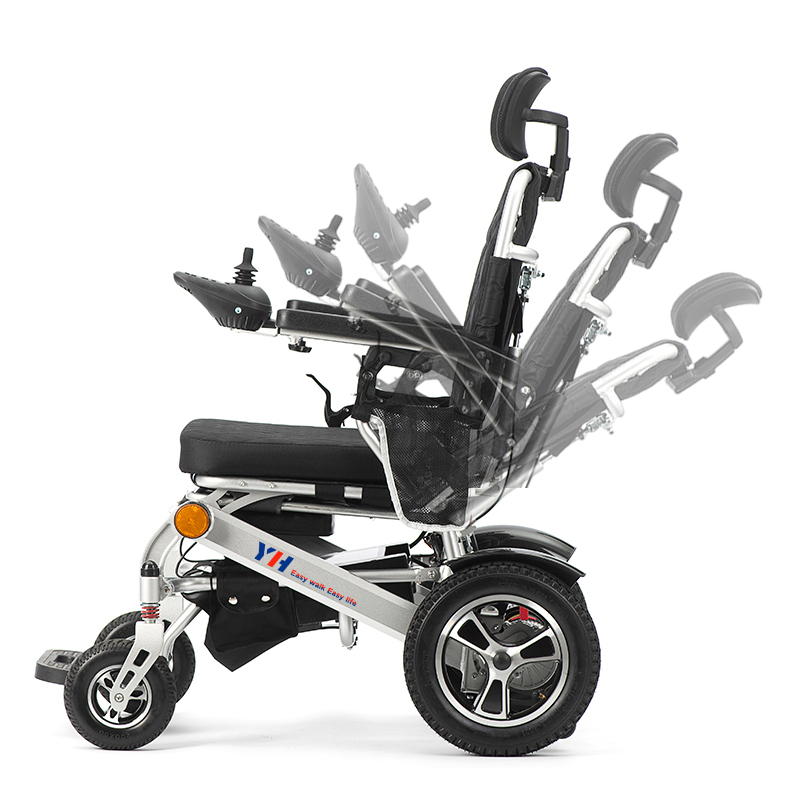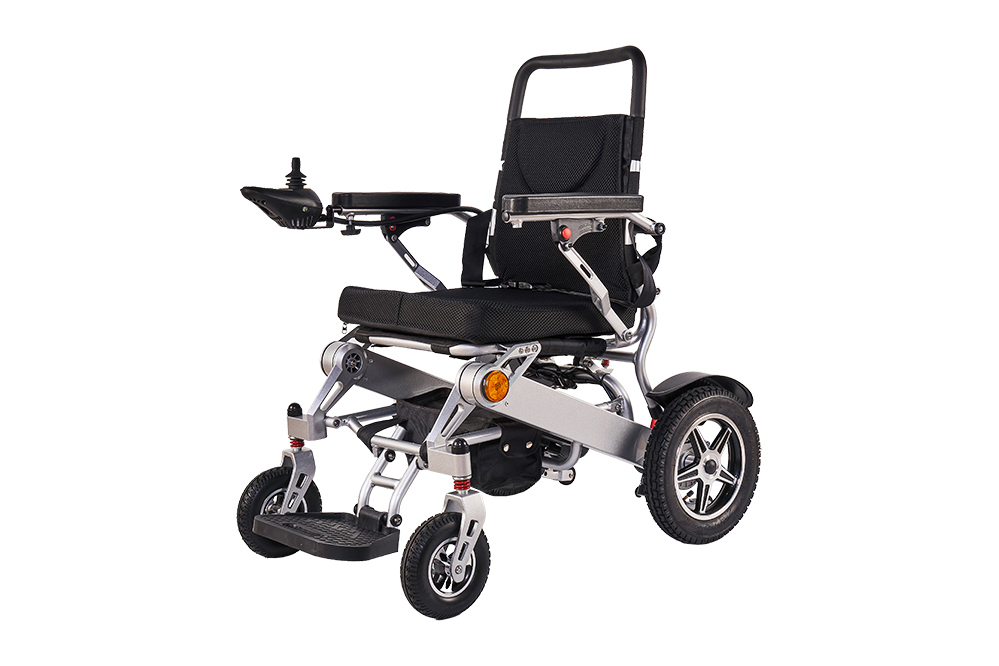The development of electric wheelchairs can be traced back to the late 1940s and early 1950s, primarily aimed at assisting injured veterans from World War II. Here are some important milestones in the history of electric wheelchairs:

1. In 1946, Canadian engineer George Klein designed the world's first electric wheelchair, called the "Eureka." It was powered by batteries and equipped with a joystick and motor control system.
2. In the 1950s,Electric Wheel Chair Scooter began to be widely used in the medical field, becoming an important tool to assist disabled individuals in rehabilitation and daily activities.
3. In the 1960s, manufacturers of electric wheelchairs started using more advanced battery technology, improving the range and reliability.
4. In the 1970s, with the advancement of electronic technology, the control systems of electric wheelchairs became more intelligent and programmable, allowing users to adjust speed, steering, and other functions.
5. In the 1990s, the design and manufacturing technology of electric wheelchairs continued to improve, with features such as reduced weight, foldability, and detachability being widely applied, making transportation and storage more convenient.
6. From the 2000s to the present, the technology of electric wheelchairs has continued to develop, including more efficient electric assist systems, advanced motor and battery technology, and intelligent control systems, further improving the performance and user experience of electric wheelchairs.
Electric wheelchairs have made significant progress and improvements over the past few decades, becoming an important assistive tool for individuals with mobility limitations. With the continuous development of science and technology and the increasing demand for accessible transportation, electric wheelchairs will continue to be improved and innovated.
As an AI assistant, I can provide you with some basic information about electric wheelchairs. An electric wheelchair is a battery-powered mobility device designed to assist individuals with limited mobility or disabilities in their daily movement and transportation.
Here are some common features and related knowledge about electric wheelchairs:
1. Drive System: Lightweight Power Wheelchairs typically use an electric drive system, such as an electric motor or power-assist, powered by a battery. They are equipped with control devices such as joysticks, buttons, or touchscreens to facilitate user control of the wheelchair's movement and steering.
2. Range: The range of an Portable Power Wheelchairs depends on the type, capacity, and usage of the battery. The range is important for users' daily transportation needs. Generally, the range of electric wheelchairs can vary from a few kilometers to several tens of kilometers.
3. Comfort: Foldable Lightweight Electric Wheelchair also consider comfort, such as seat material, adjustable height and backrest angle, and suspension systems. These designs aim to provide a more comfortable riding experience.
4. Safety: Aluminum Alloy Wheelchair typically have safety features such as braking systems and stability control systems to ensure safe operation for users in different road conditions.
5. Diversity: There are various styles and models of electric wheelchairs available in the market to meet different users' needs. Some electric wheelchairs have folding or disassembling functions for easy carrying and storage, while others are designed to handle outdoor terrains for outdoor activities.
It is worth noting that the features and performance of electric wheelchairs may vary depending on the manufacturer and model. If you are interested in specific electric wheelchair products, I recommend consulting professional salespersons or relevant organizations for more detailed and accurate information.
There are various styles of electric wheelchairs available in the market, and here are some common styles and their advantages:
1. Folding Electric Wheelchair: This style is compact and lightweight, making it easy to transport and store. It is ideal for individuals who need a wheelchair for occasional use or for traveling.
2. Power Standing Wheelchair: This style allows users to adjust the seat from a sitting position to a standing position, providing better accessibility and promoting blood circulation. It is beneficial for individuals with limited mobility or those who need to stand up frequently.
3. All-Terrain Electric Wheelchair: This style is designed with larger wheels and a sturdy frame, allowing users to navigate various terrains such as grass, gravel, and uneven surfaces. It is suitable for outdoor activities and provides greater independence for individuals with mobility challenges.
4. Heavy-Duty Electric Wheelchair: This style is built with a robust construction and higher weight capacity, making it suitable for individuals with a larger body size or those who require additional support. It offers enhanced stability and durability for long-term use.
5. Lightweight Electric Wheelchair: This style is made from lightweight materials such as aluminum or carbon fiber, making it easy to maneuver and transport. It is suitable for individuals who require a wheelchair for daily use and prefer a lightweight option for increased mobility.
6. Foldable Power Scooter: This style combines the convenience of a wheelchair with the agility of a scooter. It is compact, foldable, and easy to transport, making it suitable for individuals who need mobility assistance both indoors and outdoors.
Each style of electric wheelchair has its own advantages, and the choice depends on the specific needs and preferences of the user.
With the continuous development of technology and advances in electric wheelchair manufacturing, electric folding wheelchairs have become an increasingly popular choice and have brought many conveniences to people's lives.
Here are several aspects in which electric folding wheelchairs provide convenience:
1. Portability: Electric folding wheelchairs can easily be folded into a compact size, making them easy to carry and store. This means that users can put them in the trunk of a vehicle, public transportation, or luggage when traveling, making it convenient for outings and trips.
2. Easy operation: The folding and unfolding of electric folding wheelchairs are usually very simple, allowing users to easily complete the process without much effort or specialized skills. This enables users to quickly fold and unfold the wheelchair, enhancing usability.
3. Versatile usage: Electric folding wheelchairs are suitable for various scenarios, including homes, shopping malls, airports, parks, and other public places. Users can fold or unfold the wheelchair according to their needs, adapting to different environments and requirements.
4. Convenient for travel: Electric folding wheelchairs provide convenience for people with mobility difficulties to travel independently. Users can drive the wheelchair themselves for daily activities such as shopping, socializing, and outdoor leisure, reducing dependence on others and enhancing mobility and independence.
In summary, the emergence of electric folding wheelchairs has brought greater convenience to people with mobility difficulties. They provide advantages such as portability, easy operation, versatile usage, and travel convenience, allowing users to engage in daily activities and socialize more independently, thereby improving their quality of life and independence.
Post time: Jul-31-2023



